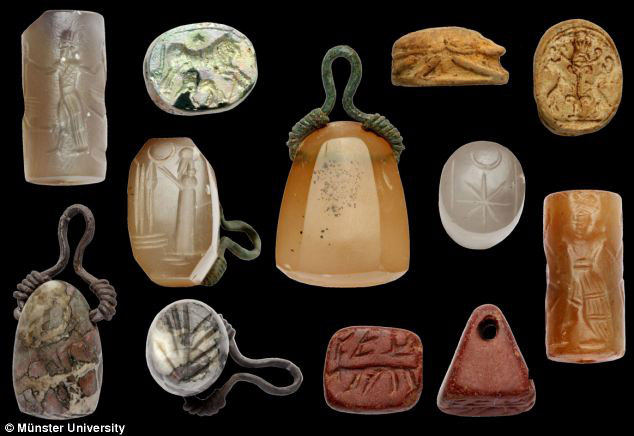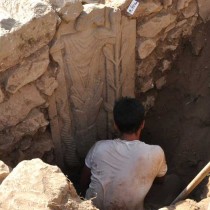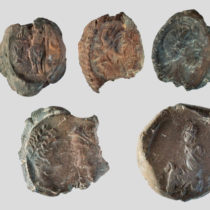Classical scholars have made an unusually large find of religious seals and amulets in an ancient sanctuary located at the Turkish mountain Dülük Baba Tepesi, at a former worship siteclose to the ancient city of Doliche.
Identified as late Babylonian, local Syrian Achaemenid and Levantine seals, the artifacts, whose number surpasses 600, date back from the 7th to the 4th centuries BC. However, they were found at the ancient sanctuary of Jupiter Dolichenus, who was one of the most important deities of the Roman Empire in the 2nd century AD.
‘Such large amounts of seal consecrations are unheard-of in any comparable sanctuary’, said excavation director Dr Engelbert Winter.”The amazingly large number proves how important seals and amulets were for the worshipping of the god to whom they were consecrated as votive offerings,’ he added.
Many pieces show scenes of adoration and provide a surprisingly vivid insight into the faith of the time.
Jupiter Dolichenus was the god of a Roman cult – the practices of which are still shrouded in a huge amount of mystery, as the cult involved secret ceremonies known only to those initiated. Researchers hope the large find will help them learn more about these practices.
The stamp seals and cylinder seals, as well as scarabs, were made of glass, stone and quartz ceramics. Different themes were found ranging from geometric ornaments and astral symbols to elaborate depictions of animals and people. They included praying men in front of divine symbols. Another popular theme was a royal hero fighting animals and hybrid creatures.
During the excavations at the sanctuary, located at the Turkish mountain Dülük Baba Tepesi, Professor Winter’s team worked in an area of over 500 square metres.
‘The results are already extending our knowledge of all periods in this holy place’s long history,’ he said.
‘It covers the time span from the early place of worship of the Iron Age and the sacred site of the Roman era, famous throughout the empire, to the long phase of utilisation as a Christian monastery, which existed until well into the time of the crusaders.’




